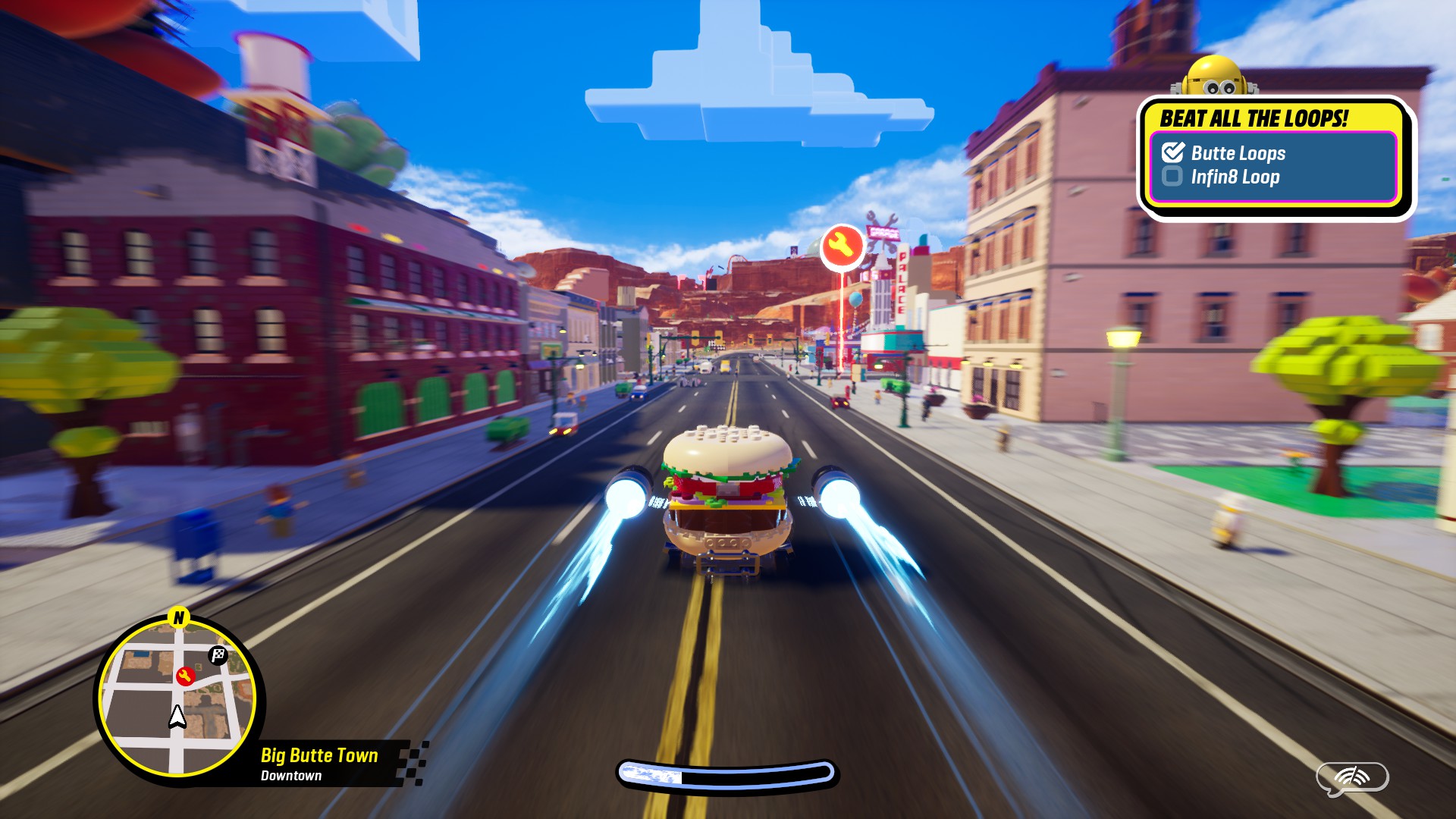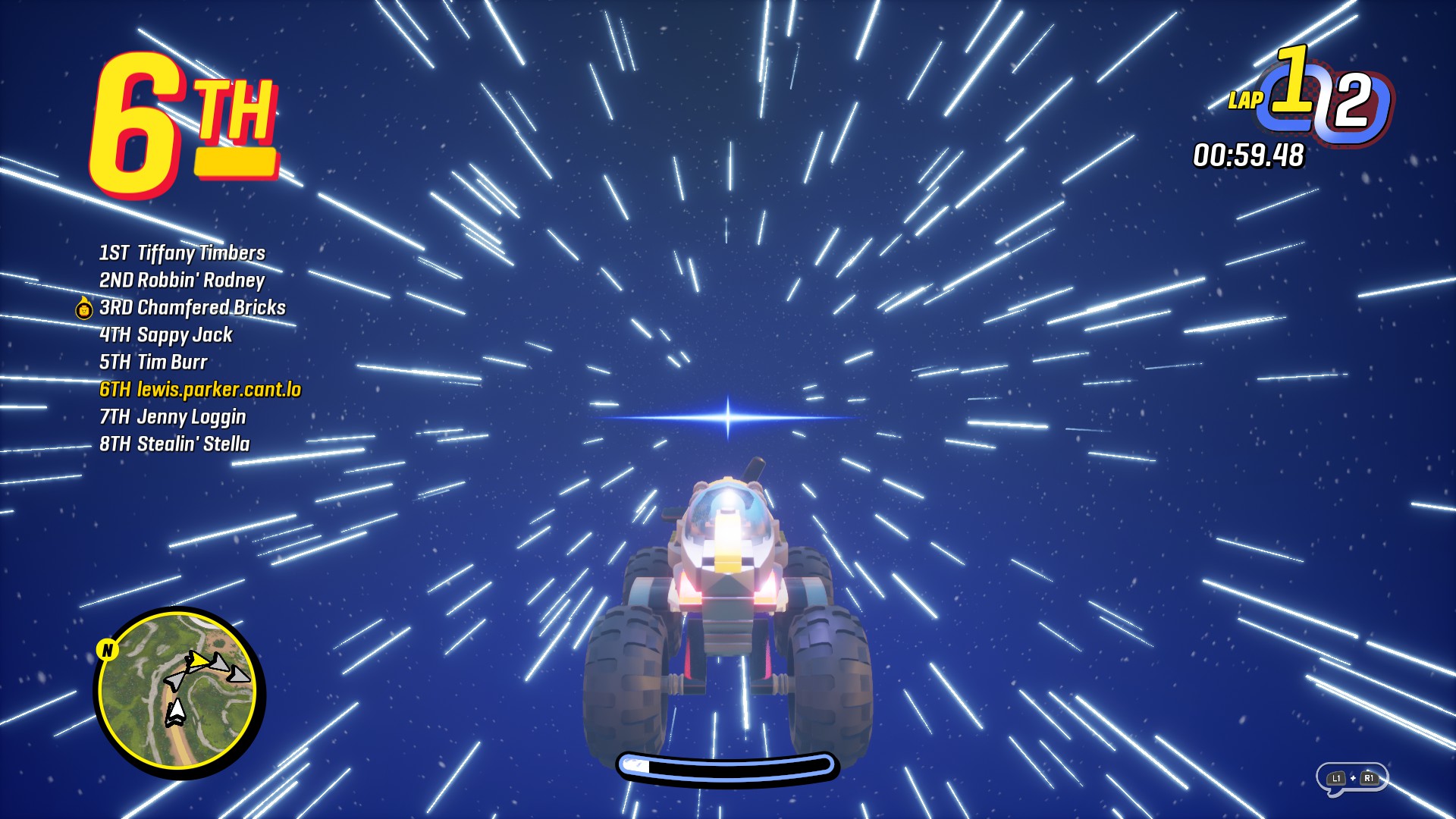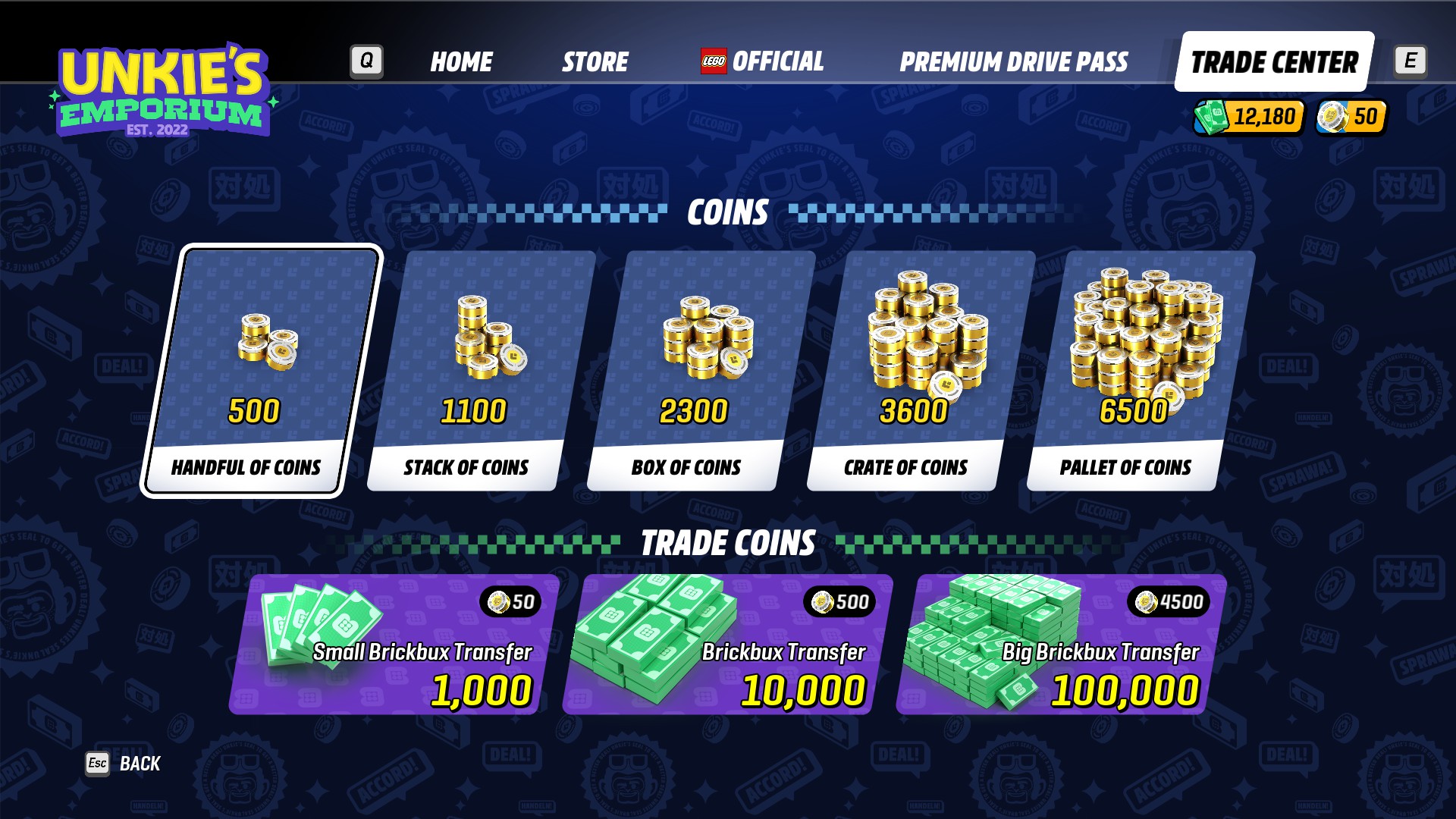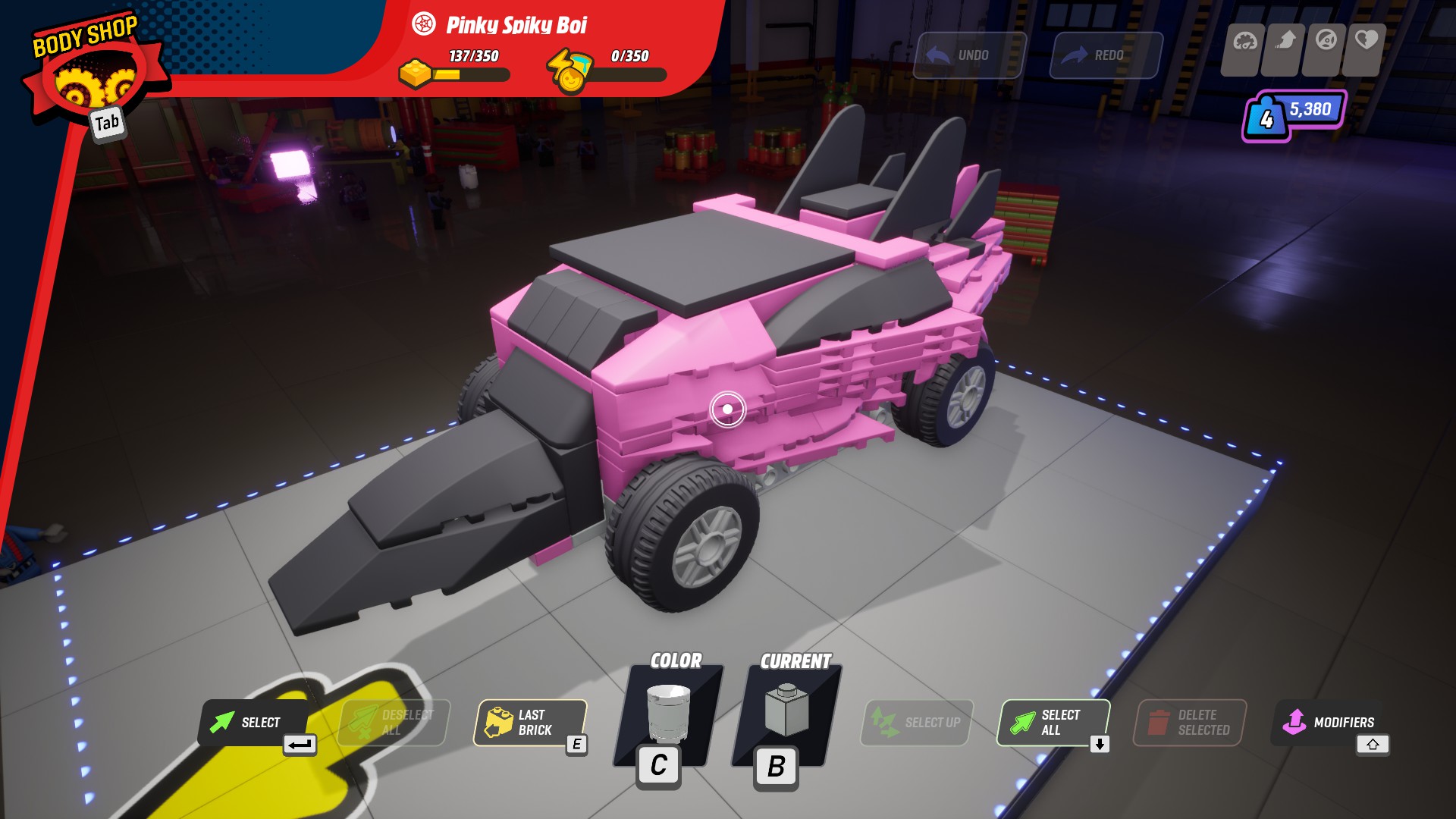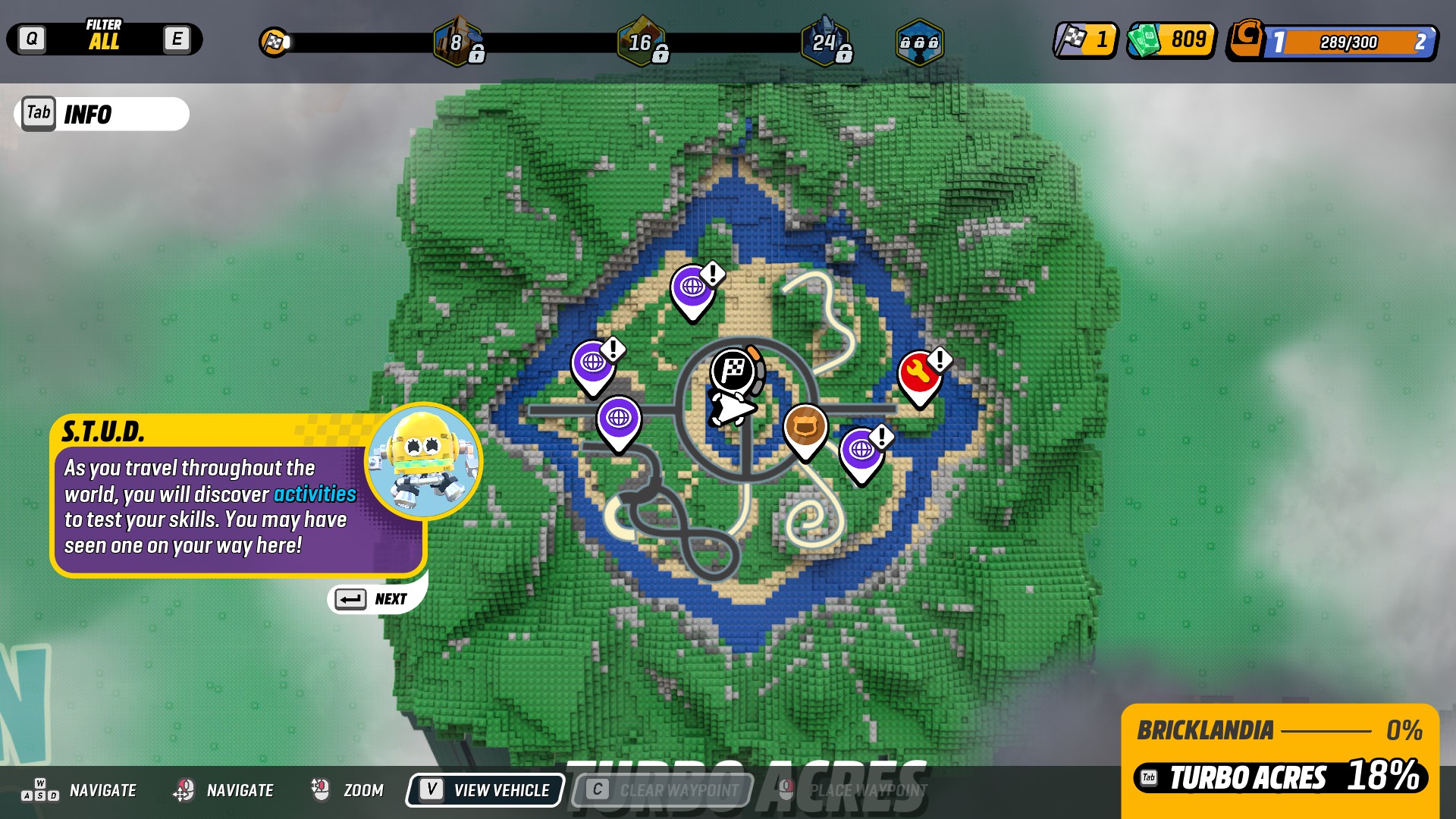Our Verdict
A fun, if repetitive, kart racer whose charms are sullied by its predatory microtransactions targeted right at young children.
PC Gamer's got your back
What is it? A Lego kart racer where you can build your own vehicles.
Release date May 19, 2023
Expect to pay $70 / £50
Developer Visual Concepts
Publisher 2K
Reviewed on GeForce RTX 2060 SUPER, i7-7820X, 64GB RAM
Multiplayer Yes
Steam Deck N/A
Link Official site
Every time I play a new “kart” racing game, I'm always disappointedly surprised at the lack of innovation within the genre—and Lego 2K Drive is nothing new in that respect. Every drift around a corner, every boost off a ramp, I had the same thought: I've played this game before. You've, undoubtedly, played this game before. This is Mario Kart. This is Crash Team Racing. This is Garfield Kart.
That being said, Lego 2K Drive’s take on kart racing does feel extremely polished. The controls feel weighty and responsive, and there's plenty of feedback in its turns and drifts based on the size and specifications of your vehicle. The courses themselves are decently varied, even if personally I would have preferred a greater focus on shortcuts and alternate routes, and the open-world maps in the story campaign feel appropriately expansive.
The humour in Lego 2K Drive does feel a little bit more juvenile than your standard Lego game—they seem to be targeting an even younger demographic than usual.
Lego 2K Drive's story mode is absolutely stuffed full of content, though this is mostly to its detriment. The actual story missions only took me about 5 hours to complete, but there's a wealth of side missions and challenges to work through once you've beaten them. These extra activities are very cut and paste however, and you'll be repeating the same missions several times across every map if you're going for 100% completion or, worse, trying to grind through missions in an attempt to earn more "Brickbux" – Lego 2K Drive's in-game currency for its microtransaction store (more on that later…).
The story missions have the sort of quirky flair and silly jokes that have come to be expected of the Lego brand. Players above a certain age will most likely find themselves groaning through endless puns in an attempt to skip to the next race. Kids will absolutely love the never-ending stream of gags however, and they'll especially love the main villain and star of the show, Shadow Z. The humour in Lego 2K Drive does feel a little bit more juvenile than your standard Lego game—they seem to be targeting an even younger demographic than usual. I will admit though, even as a grown man with greying hairs, some of the jokes did manage to get a few chuckles out of me—mostly as a result of Shadow Z's voice actor Rene Mujica fully committing to the role.
Need for greed
The micro-transactions in this game are predatory, and I don't use that term lightly. They completely detract from what would otherwise be a family-friendly game that parents and kids alike could enjoy.
The one feature that does actually set Lego 2K Drive apart from its contemporaries is, unfortunately, both its biggest draw and its biggest drawback: the kart building system. It's genuinely impressive, allowing you to craft any manner of car, boat, or off-road vehicle you could possibly imagine. Using the Lego parts you've acquired through completing missions, you can craft any manner of four-wheeled monstrosity that you can possibly imagine. The system itself is easy to get to grips with, well explained and effectively limitless (outside of literal weight limitations). Everything is 1-to-1 in terms of real-life Lego specifications too, meaning that if you can build it in-game you could 100% replicate said creation with real Legos.
But to get the most out of build mode, you’re going to need the best parts—parts that are only available to buy with real money. The coolest engines, the best looking tyres, and the sharpest-dressed drivers are all locked in Unkie’s Emporium, a colourful-looking storefront that allows you to use the Brickbux you’ve spent real money on. The micro-transactions in this game are predatory, and I don't use that term lightly. They completely detract from what would otherwise be a family-friendly game that parents and kids alike could enjoy. The build system and its straightforward tutorials, a light and humourous campaign, and offline split screen make for a perfect child-appropriate romp through the world of Lego, but unfortunately profit margins have taken precedence over crafting a wholesome experience.
Lego 2K Drive is also very upfront about making sure you know this is a game for children. Everything from the story mode, which constantly refers to you as “kid”, to the microtransaction store itself, which asks you to get your parent's permission before accessing it, constantly reminds you that this is a game targeted at a younger demographic—which makes the wildly overpriced bundles, such as the $50 coin pack, and the in-your-face nature of its micro-transactions all the more brazen. After finishing the campaign and a good bulk of Lego 2K Drive's side missions, I barely had enough in-game credit to purchase more than three vehicles from the store, let alone any of the shiny extras offered up alongside them.
Keep up to date with the most important stories and the best deals, as picked by the PC Gamer team.
Just to clarify, at launch on current-gen platforms, this is a $70 game—a $70 children's game that's launched with a season pass and an overstuffed micro-transaction laden store. Even putting aside its demographic, is it really acceptable that a full-priced game has so many extras locked behind the use of a credit card at launch?
Kart attack
The rapacious nature of the microtransactions in Lego 2K Drive makes it impossible to recommend to anyone within its target demographic.
Performance-wise, Lego 2K Drive ran extremely well on both builds I tested it on. The lower-end build (i7-7820X, GeForce RTX 2060 SUPER, 16GB RAM) almost managed to run Lego 2K Drive on its highest settings, although this did have a slightly noticeable yet overall minor effect on the framerate. Even in split-screen, the i7-7820X build managed to perform well with relatively little in the way of performance issues. My higher end build (Ryzen 9 5900X, RTX 4080, 64GB RAM) ran the game with absolutely no issues, at a perfectly consistent framerate. Admittedly, even though Lego 2K Drive looks pretty good and some of the destruction mechanics are impressive enough that you would expect them to impact the frame rate, it's not exactly pushing the envelope in regards to its graphics—nor is it trying to. Yet, in this day and age, a PC game that looks good and runs well at launch is rare enough to be worth lauding.
There is a lot to love in Lego 2K Drive, especially if you are a fan of kart racers or Lego in general. The game runs well, it's got a wealth of content to work through, and there is a clear love for the Lego franchise that permeates everything from the game design to the maps themselves. Sure, outside of its build system, Lego 2K Drive isn't exactly trying to be innovative, but solid, fun gameplay more than makes up for a lack of ambition. This makes it all the more disappointing that the rapacious nature of the microtransactions in Lego 2K Drive makes it impossible to recommend to anyone within its target demographic.
A fun, if repetitive, kart racer whose charms are sullied by its predatory microtransactions targeted right at young children.
